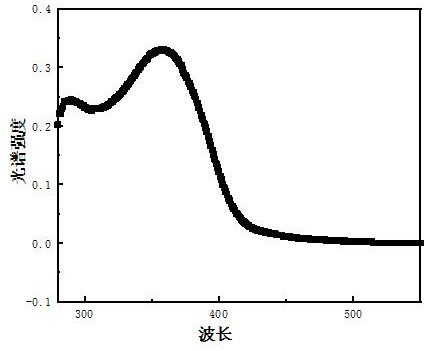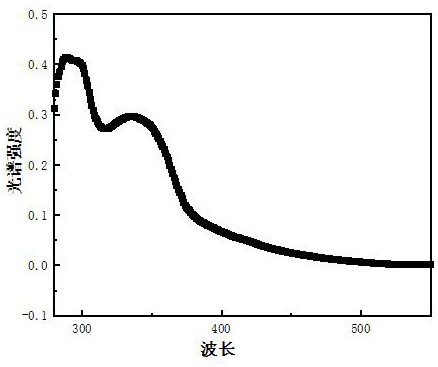Organic light-emitting layer ink, preparation method and light-emitting layer forming method
An organic light-emitting layer, organic technology, applied in the field of OLED, can solve problems such as the destruction of the light-emitting layer, and achieve the effect of reducing the efficiency roll-off and avoiding mutual dissolution
- Summary
- Abstract
- Description
- Claims
- Application Information
AI Technical Summary
Problems solved by technology
Method used
Image
Examples
Embodiment 1
[0049] Weigh each component of the organic light-emitting layer ink according to the mass fraction; including 4.5% of the cross-linked organic host material, wherein the mass fraction of the hole-type organic host material is 3.6%, and the mass fraction of the electronic organic host material is 0.9%; 0.5% of miscellaneous luminescent material; 5% of regulator, wherein the mass fraction of viscosity regulator is 4%, the mass fraction of surface tension regulator is 1%; solvent 90%.
[0050] The hole-type organic host material is H1 above, the electron-type organic host material is E3 above, the organic doped light-emitting material is D7 above, the surface tension regulator is hydroquinone, and the viscosity regulator is o-methoxybenzene. Methyl formate, the main solvent is o-dichlorobenzene.
[0051] The weighed cross-linked organic host material and the organic doped luminescent material were dissolved in a solvent, and heated and stirred at 60° C. for 1 hour during the diss...
Embodiment 2
[0056] The components of the organic light-emitting layer ink are provided according to the mass fraction; including 3% of the cross-linked organic host material, of which the mass fraction of the hole-type organic host material is 1.8%, and the mass fraction of the electronic organic host material is 1.2%; organic doping 0.6% luminescent material; 3% regulator, 2% mass fraction of viscosity regulator, 1% mass fraction of surface tension regulator; 93.4% solvent.
[0057] The hole-type organic host material is H2 above, the electron-type organic host material is E1 above, the organic doped light-emitting material is D1 above, the surface tension regulator is cumene, and the viscosity regulator is diphenyl ether. The solvent is methyl benzoate.
[0058] The weighed cross-linked organic host material and the organic doped luminescent material were dissolved in a solvent, and heated and stirred at 80° C. for 30 minutes during the dissolution process to obtain a first mixed soluti...
Embodiment 3
[0063] The components of the organic light-emitting layer ink are provided according to the mass fraction; including 6.4% of cross-linked organic host materials, of which the mass fraction of hole-type organic host materials is 3.2%, and the mass fraction of electronic-type organic host materials is 3.2%; organic doping 1.6% of luminescent material; 5% of regulator, wherein the mass fraction of viscosity regulator is 3%, the mass fraction of surface tension regulator is 2%; solvent 87%.
[0064] The hole-type organic host material is H6 above, the electron-type organic host material is E5 above, the organic doped light-emitting material is D6 above, the surface tension modifier is phenol, the viscosity modifier is diphenyl ether, and the main solvent is cyclo Hexylbenzene.
[0065] The weighed cross-linked organic host material and the organic doped luminescent material were dissolved in a solvent, and heated and stirred at 80° C. for 1 hour during the dissolution process to o...
PUM
| Property | Measurement | Unit |
|---|---|---|
| thickness | aaaaa | aaaaa |
| current efficiency | aaaaa | aaaaa |
| current efficiency | aaaaa | aaaaa |
Abstract
Description
Claims
Application Information
 Login to View More
Login to View More - R&D
- Intellectual Property
- Life Sciences
- Materials
- Tech Scout
- Unparalleled Data Quality
- Higher Quality Content
- 60% Fewer Hallucinations
Browse by: Latest US Patents, China's latest patents, Technical Efficacy Thesaurus, Application Domain, Technology Topic, Popular Technical Reports.
© 2025 PatSnap. All rights reserved.Legal|Privacy policy|Modern Slavery Act Transparency Statement|Sitemap|About US| Contact US: help@patsnap.com



